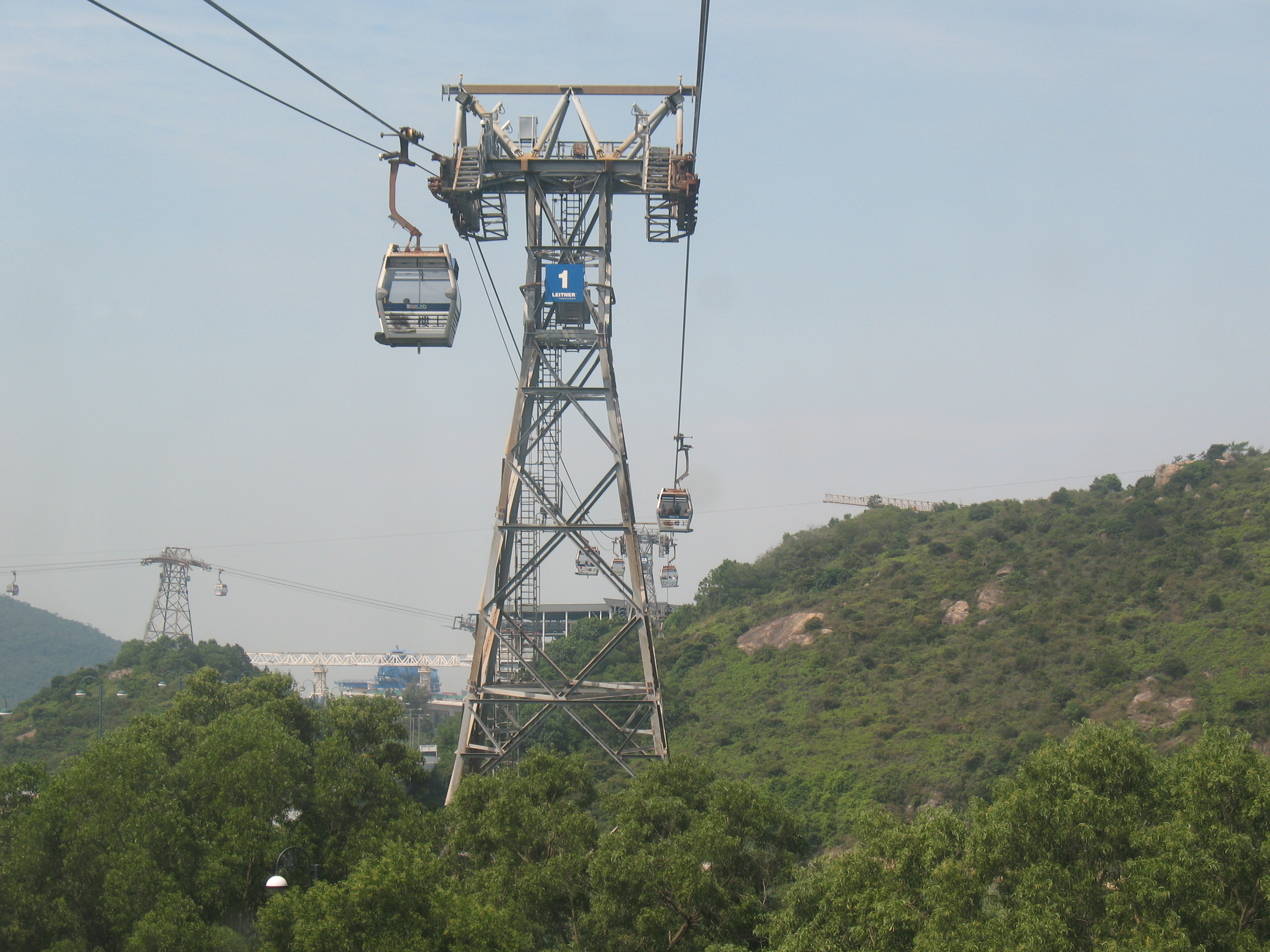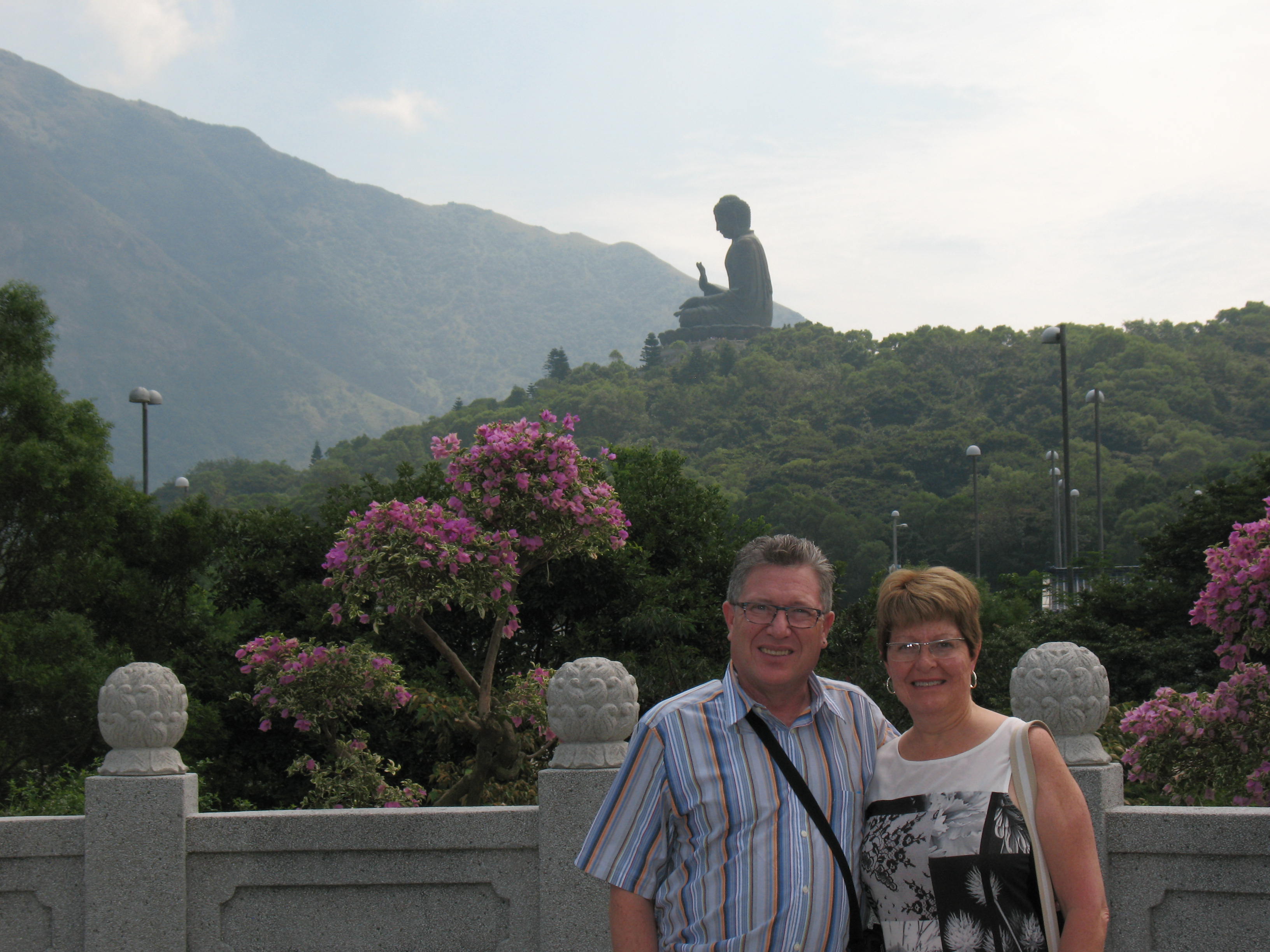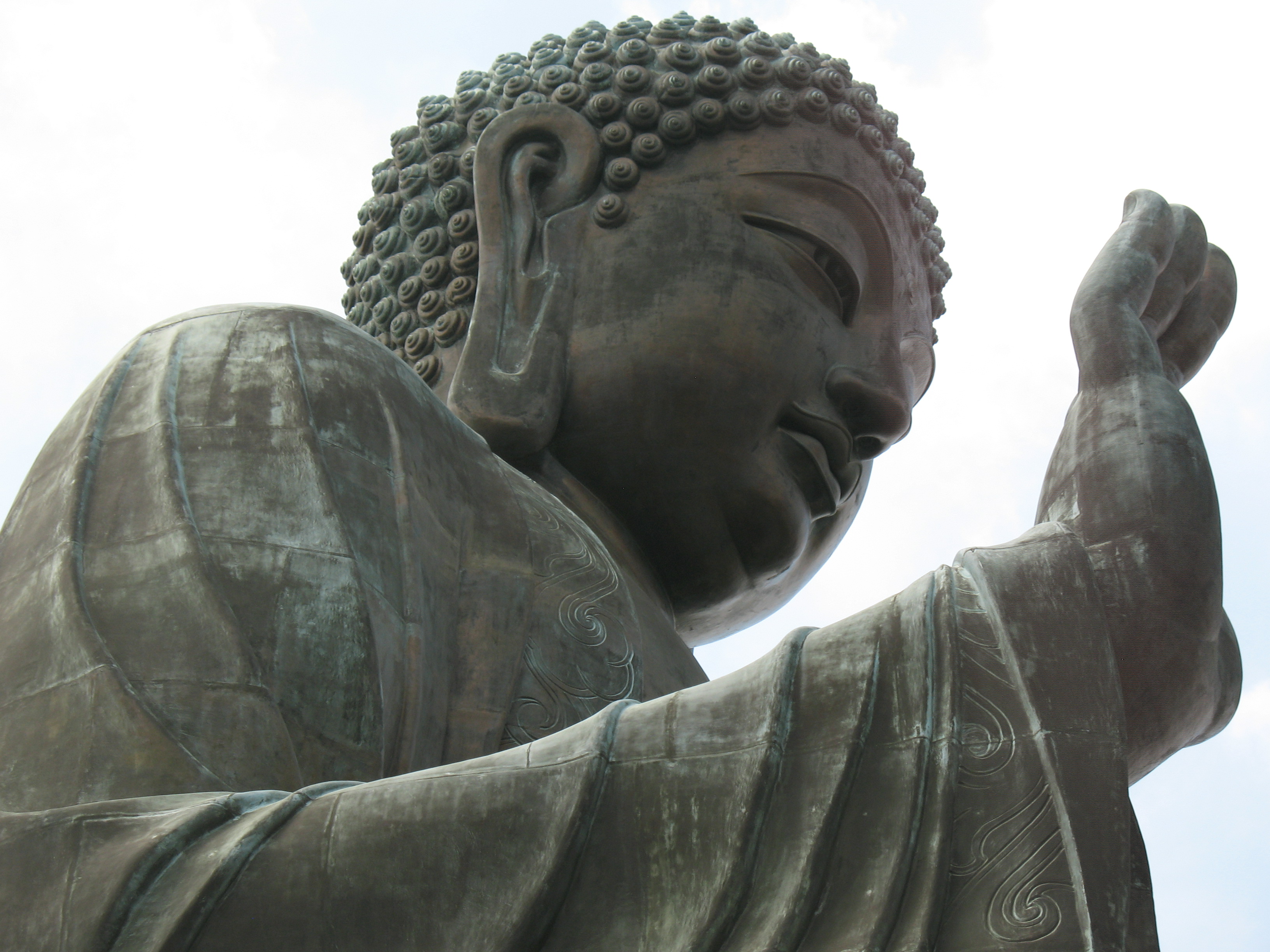 I was petrified, my survival seemed precarious, I froze in place, closed my eyes, cowered, made myself as small, as light as possible. The other two people in that gondola suspended several hundred feet above the valley floor seemed calm; the woman facing me chatted on her phone, Pat, seated next to me, reassured me when I would let her, but knew to generally let me be alone with my terror. During the cable car trip up the mountain from Hong Kong, I had appreciated the view, espied the Tian Tan Buddha on the crest, intermittently visible, that was the goal of our ascent, but coming back down, it was only terror.
I was petrified, my survival seemed precarious, I froze in place, closed my eyes, cowered, made myself as small, as light as possible. The other two people in that gondola suspended several hundred feet above the valley floor seemed calm; the woman facing me chatted on her phone, Pat, seated next to me, reassured me when I would let her, but knew to generally let me be alone with my terror. During the cable car trip up the mountain from Hong Kong, I had appreciated the view, espied the Tian Tan Buddha on the crest, intermittently visible, that was the goal of our ascent, but coming back down, it was only terror.
During a recent visit to New York with our grandson Aaron, we took in the view from the observation deck (1268 ft) of One World Trade Center. The vistas afforded, over the other Manhattan skyscrapers, the helicopters flying beneath us, were spectacular.
I was never much got at playing king of the hill; I guess I didn’t care enough about being on top to risk being knocked off by the bigger kids. Children who play this game acknowledge a basic understanding of reality, that the one who controls the highest point exerts power over the rest of the back yard, the playground, the battlefield. As we did in New York, tourists line up to take the elevator to the summit of skyscrapers and monuments, even when, as with the Washington Monument’s tiny windows, the space on top is cramp and the view, while inspiring, is limited.
being knocked off by the bigger kids. Children who play this game acknowledge a basic understanding of reality, that the one who controls the highest point exerts power over the rest of the back yard, the playground, the battlefield. As we did in New York, tourists line up to take the elevator to the summit of skyscrapers and monuments, even when, as with the Washington Monument’s tiny windows, the space on top is cramp and the view, while inspiring, is limited.
Being able to see distant objects is an interesting diversion, but the popularity of the activity suggests something more, maybe a sense of dominion alloyed with a hint of danger. We associate height with power. In business, people climb corporate ladders and break through ceilings. Politicians clamor for election to high office. An elite few of us reach the pinnacle of our professions.
In addition to this feeling of suzerainty, elevation, whether in altitude or position, provides the possibility of perspective, and more than just from a scenic vista standpoint. The business executive who has worked their way from labor to management to the C suite has a wealth of experience and a nuts-and-bolts perspective of the strengths and weaknesses of the enterprise. This perspective is exceedingly more valuable than that of the executive who attends only to direct reports and balance sheets, who never endured the climb. The perspective of elevation is only of value if it is taken and understood.
 We understand height in a spiritual context also. We may enjoy high spirits, have lofty ideals, and celebrate mountaintop experiences. An advantage of these, just like physical excursions to high altitudes, is that we know they are temporary, that we will return to the lowlands, to the routine of life. But our transient exposure to any of these heights can grant us a wider appreciation of all parts of our lives, the routine and the adventurous, the humdrum and the exciting, the lows and the spectacular highs.
We understand height in a spiritual context also. We may enjoy high spirits, have lofty ideals, and celebrate mountaintop experiences. An advantage of these, just like physical excursions to high altitudes, is that we know they are temporary, that we will return to the lowlands, to the routine of life. But our transient exposure to any of these heights can grant us a wider appreciation of all parts of our lives, the routine and the adventurous, the humdrum and the exciting, the lows and the spectacular highs.




